When we think of European travel, we might picture a couple holding hands on Paris’s Pont des Arts or adult friends partying until dawn in Barcelona. But Europe is also a fantastic place to take the kids. Cities from Berlin to Prague are packed with parks, castles, and museums tailormade for little ones. They’re also geared to parents, placing playgrounds next to beer gardens and cafes, so every family member can actually have fun. Here are the most kid-friendly cities in Europe to check out this year.
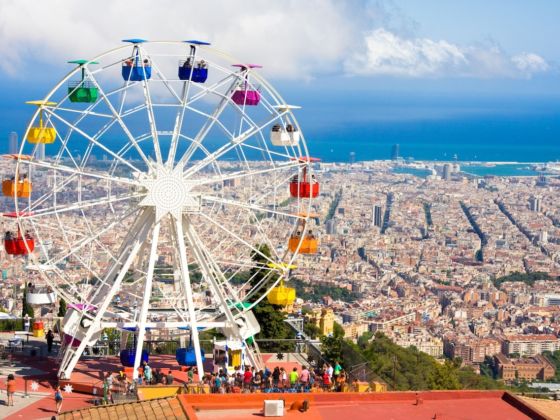

The Most Kid-Friendly Cities in Europe
London, England
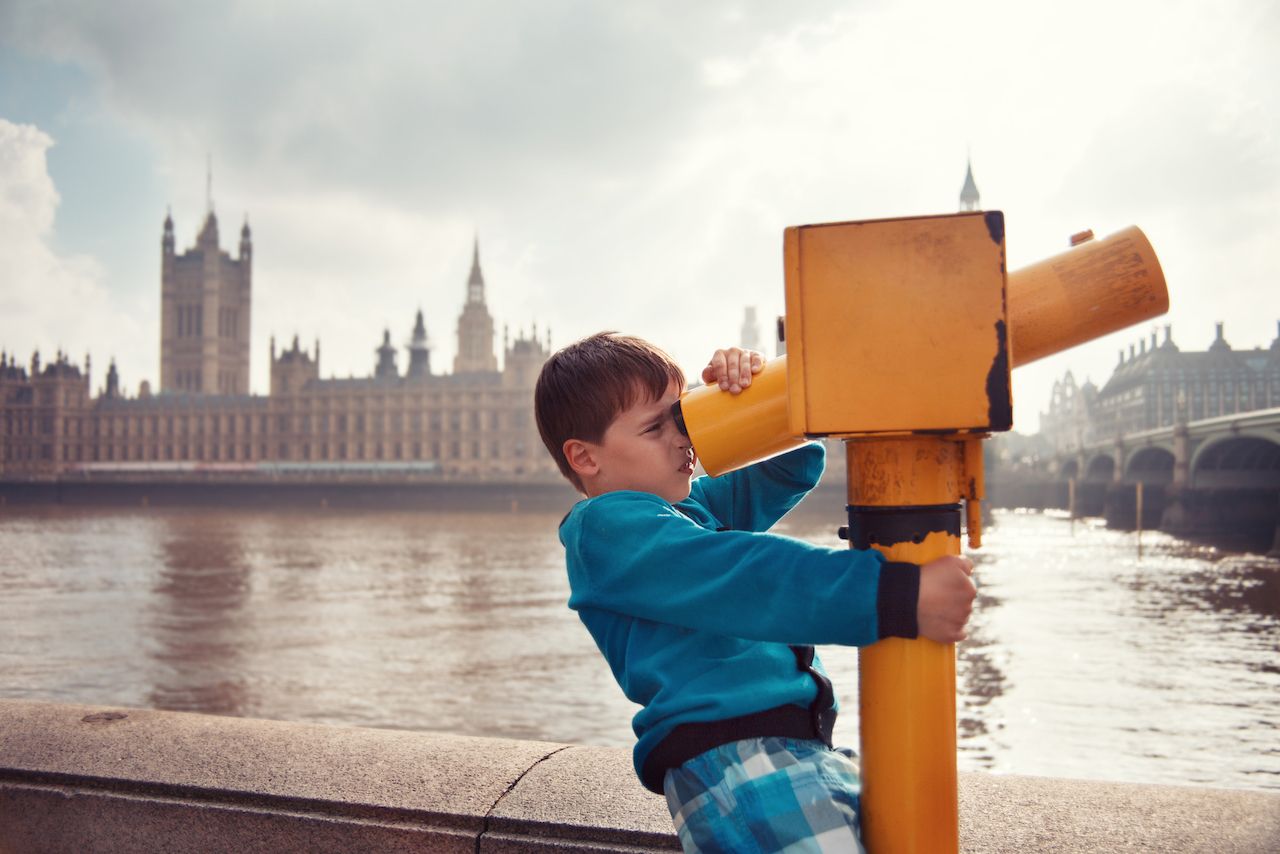
Photo: Levranii/Shutterstock
One of Europe’s biggest cities is also one of its child friendliest, with tons of places to take your children that you’ll enjoy too. The London Transport Museum has enough driveable buses, trams, trolleys, and trains to thrill even the most automobile-obsessed four-year-old. Older kids can read the exhibits while younger kids can get in the train simulator and tour the London Underground. Aboveground, visit the London Eye, a towering Ferris wheel that rises 443 feet in the air. Everyone can enjoy hands-on exhibits at the Science Museum while the Natural History Museum is huge and welcoming and has a large dinosaur collection.
If your kids love history, London overflows with it. Tower Bridge, Buckingham Palace, the Tower of London, and dozens of museums and galleries could provide hours of entertainment — or spooky stories about ghosts. Kensington Gardens’ Diana Memorial Playground has a life-sized pirate ship and teepees scattered across a background of sand and trees, giving kids the space to run and climb while adults enjoy pastries and coffee from the nearby cafe. A 45-minute train ride brings you to WB Studios where Harry Potter was made; enjoy the tour, but skip the butterbeer (too sweet).
Getting around with kids in London is also easy. Double-decker buses are an attraction on their own, and you can get just about anywhere on the Tube. London’s only downside with kids is the price. As one of Europe’s most expensive cities to visit, it’s possible to rack up some hefty fees. Keep your meals at fish and chip shops and curry takeaways, though, and you’ll keep costs low while enjoying a more authentic experience.
Paris, France
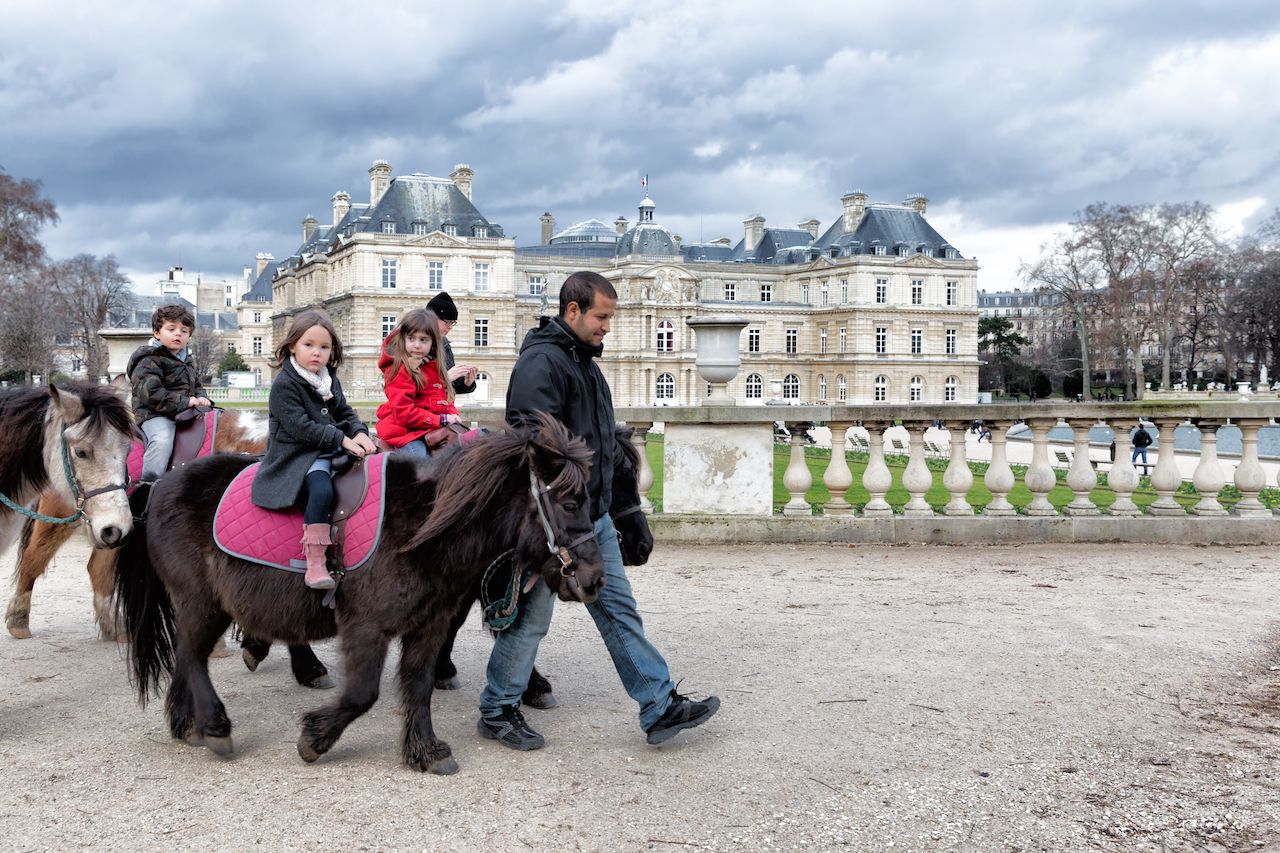
Photo: cdrin/Shutterstock
Supposedly the city of lovers, Paris is also the city of children. Ask any kid sailing wooden boats or riding a pony in the Jardins du Luxembourg whether they’re having a good time, and the answer is a solid yes. When traveling with kids, skip the Louvre — with its long lines and expensive entry fees — and head for the Centre Pompidou; the exterior elevator tubes and modern art are big favorites with tiny people. Older kids will enjoy the Catacombs, an underground labyrinth spanning over 11,000 square meters where over six million bones are stored in a variety of cool and creepy layouts. Plan ahead and buy a “skip the line” ticket online; kids are about $5.75 (five euros). In nice weather, wander through the streets of Montmartre. The whole family can enjoy colorful artist stalls and spectacular city views. Tour Sacre-Coeur or watch the street performers, then have lunch at a petit cafe before heading down the hill. If you stop in Square Jehan-Rictus, adults can take in Le mur des je t’aime (”The I love you wall”), an art piece dedicated to love, while kids check out the small playground several feet away.
At the Notre Dame Cathedral, the stunning and cavernous indoor spaces provide room to wiggle while still being intriguing for adults. Right around the corner, famous ice cream shop Berthillon Glacier serves the flavors candied chestnut and salted butter caramel alongside surefire kid hits like chocolate and vanilla. You could even add a trip to Disneyland Paris. It’s about 45 minutes from central Paris by train and about 25 percent cheaper than a similar trip in the US. Expect the usual theme park fare of rides, overpriced snacks, and interactive game adventures. One difference, seeing as its located near Europe’s gastronomic capital, is that the high-end restaurants on-site get rave reviews; book ahead to ensure a spot, especially in summer.
Barcelona, Spain
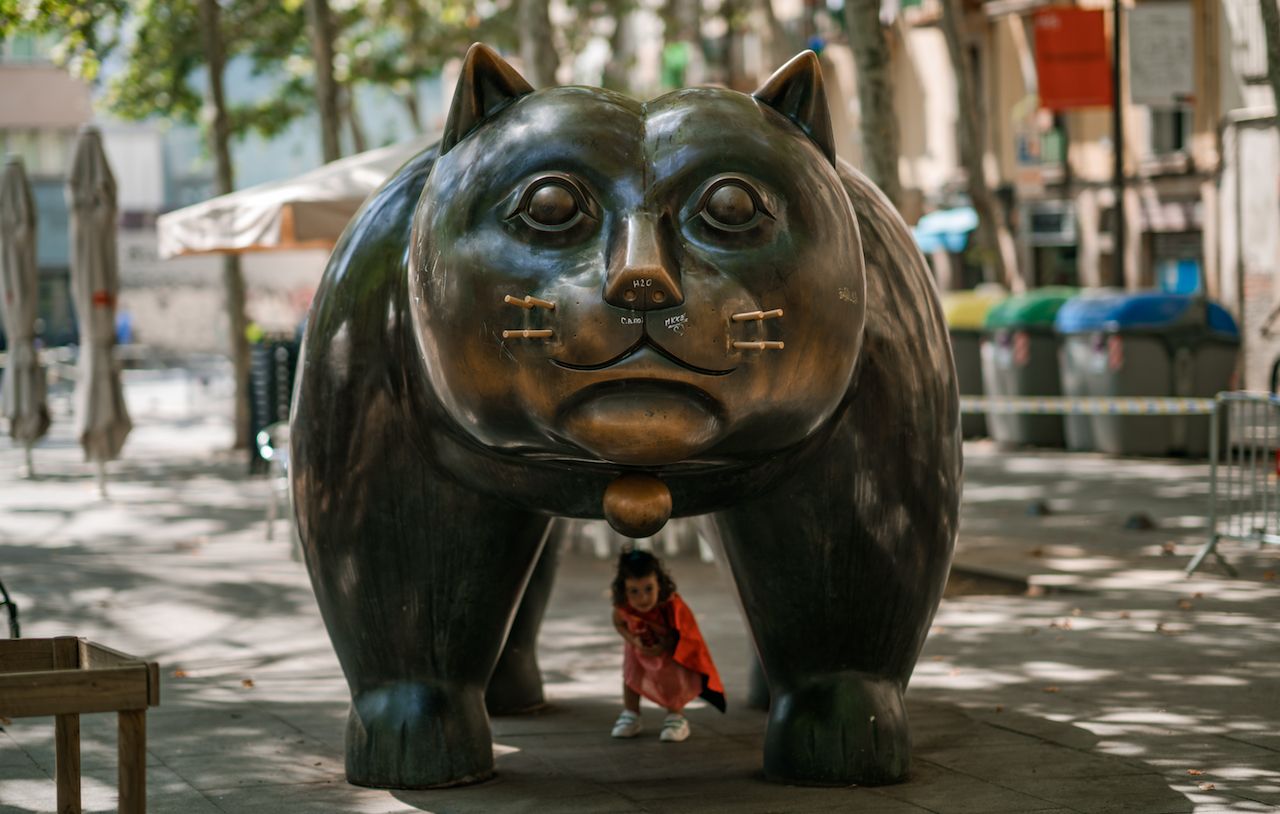
Photo: NoyanYalcin/Shutterstock
Barcelona combines the urban atmosphere of a large city with the laid-back ease of a beach town. Barceloneta Beach is huge and calm, and it’s right next to a historic district known for delicious seafood tapas. Kids can swim and play in the sand while adults take advantage of the beachfront bars and restaurants. Everyone will enjoy a visit to the Museum of Chocolate, which offers tasting opportunities and workshops like “Chocolate Artists” where kids get creative with melted chocolate. At Park Güell, kids enjoy the wacky sculptures while running around the large outdoor space, and adults can appreciate Gaudi’s artistry. Check for tickets online before you arrive as it often sells out. Take a funicular uphill to Tibidabo, a perfectly sized amusement park overlooking the whole of Barcelona with the sea beyond.
While some kids don’t enjoy traditional Spanish dishes, most like tortilla española; tell them it’s just like scrambled eggs with potatoes. Or try the albondigas, meatballs, the meal of choice for Spanish kids themselves. Since mealtimes here skew very late, with restaurants not open for dinner until 8:30 PM or later, plan accordingly. One option is to book the latest lunch serving possible, which can sometimes be as late as 4:30 PM. The other is to hit up tapas places like Ciudad Condal and have “dinner” at 6:00 PM. Order the patatas bravas with the spicy sauce on the side; they’re like thick French fries. Public transit is very accessible to children, also. We took two toddlers on the trains all over the city with great success and only lost one boot.
Berlin, Germany

Photo: Romrodphoto/Shutterstock
Berlin is best known as a thriving creative heartland jammed with arts collectives, performance spaces, and unusual installation pieces. But it’s also jammed with tons of things for little ones to do. Walk through the Deutches Technikmuseum’s seemingly endless halls of airplanes, boats, and trains. (Warning: The train exhibit talks about how trains were used in the Holocaust, so sensitive kids might need some preparation.) Tiny history buffs, or even those who just enjoy pushing a bunch of blinking buttons, would enjoy a trip to the DDR Museum, which has a series of interactive exhibits on what life was like before the Berlin Wall fell.
The Checkpoint Charlie Museum focuses on escape attempts. It also offers real passport stamps, but be careful: Having unofficial stamps may invalidate your passport, depending on the issuing country. Older kids and their game-loving adults might appreciate a visit to Computerspielemuseum — an entire (smallish) museum dedicated to computer and video games. Kids of all ages will appreciate MACHmit!, a kids’ museum with interactive play areas, regular art and education exhibits, and creative workshops. Most museums have “family ticket” options where a flat rate buys access for up to five people.
If the weather’s good, head outdoors. Parks usually have playgrounds and beer gardens. A good example is Cáfe am Neuen See where you can also rent a boat to row around the lake. Berlin has several Kinderbauernhöfe, child-focused urban farmyards where kids can pet domesticated animals, take workshops in agriculture, and learn about plants (usually in German but not always). Try Kinderbauernhof auf dem Görlitzer, located in Görlitzer Park.
Many restaurants have child-friendly options and welcome kids without blinking an eye at small running feet. Specialty kindercafes are scattered everywhere in the city, with dedicated play areas next to adult-friendly cafes and restaurants; you can enjoy snacks while kids get their zoomies out. Try Amitola with its children’s theater performances and secondhand store next door, or Café Schönhausen where you can get waffles with a scoop of ice cream. A more adult-oriented option is to hit up Markthalle 9, an indoor market selling produce and specialty meats and cheeses. Packed with food stalls, local merchants, and sometimes even local street performers, everyone can find something they like here… especially if the candy- and pastry-focused Naschmarkt is running.
Stockholm, Sweden
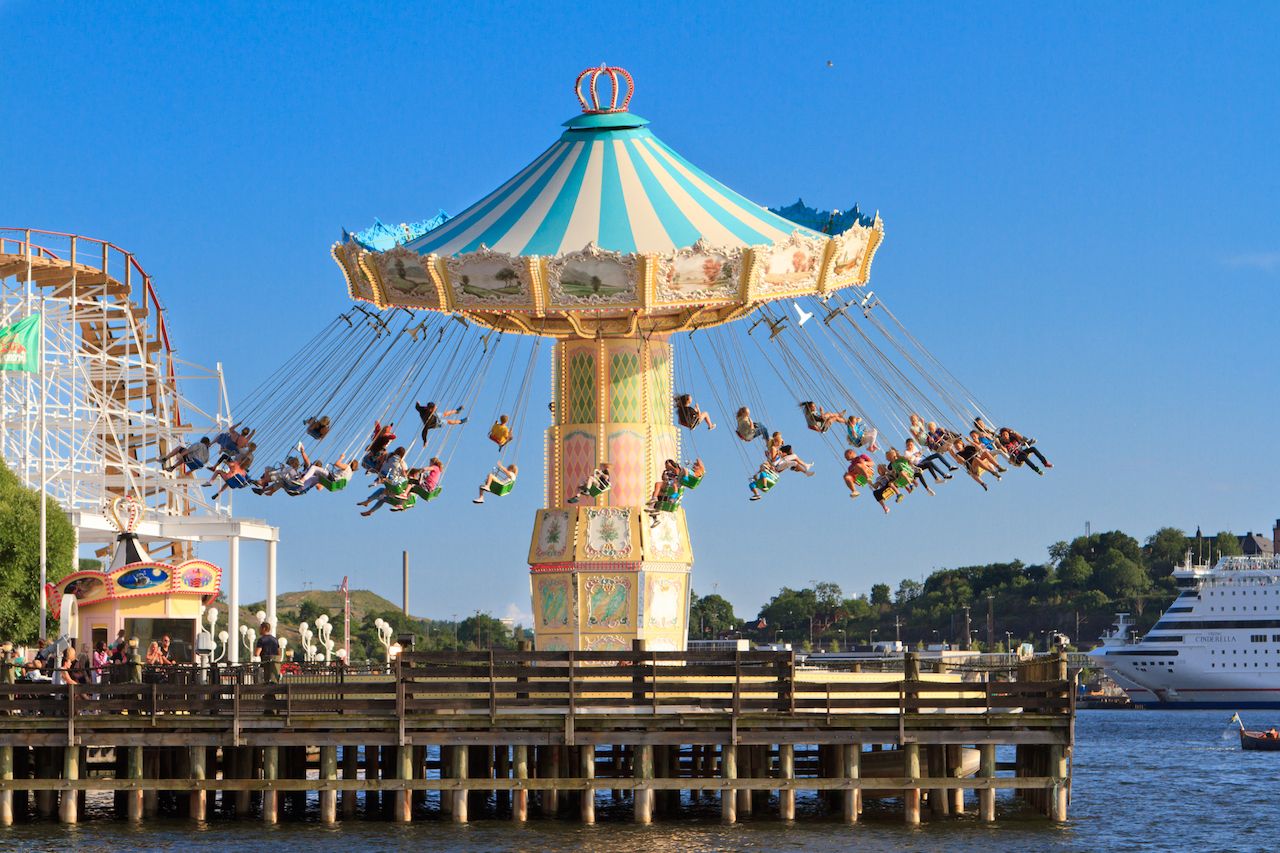
Photo: NadyaEugene/Shutterstock
With some of the best parental benefits in the world, it’s no surprise that Sweden is intensely child-friendly. All restaurants and cafes have changing tables — in both bathrooms! — and free or cheap activities for the under-18s abound, no matter where you go. Sweden’s capital of Stockholm, stretching over several islands, is especially captivating. Kids can enjoy boat rides and bridge-hopping between neighborhoods or duck underground and explore the whimsical subway stations. In between rides at the waterfront amusement park Gröna Lund, kids can experience the Swedish obsession with licorice in all flavors, sold in strings as long as your arm.
At Junibacken Museum, Sweden’s favourite author, Astrid Lindgren, is prominently featured, and kids can get their very own stuffed version of Pippi Longstocking’s famous horse in the bookstore. Next is Skansen, the world’s oldest open-air museum; living history exhibits allow guests to see how Swedes have lived throughout the years, as well as participate in traditional activities while visiting a plethora of wild and domesticated animals in Skansen’s zoo and aquarium.
Public transportation with children in Stockholm is cheap and easy. If you’re traveling with a stroller, one adult may enter the train or bus free of charge. Stockholm’s weather is relatively mild compared to northern Sweden’s sub-Arctic winter temperatures, but prepare for lots of rain if you go in fall or winter. If your kids are still tiny, consider stocking up on Sweden’s infamous one-piece rain suits; you’ll be the envy of every other parent back home. Sweden is also home to a number of child-friendly foods. Kanelbullar (cinnamon buns) and other pastries are a staple of everyone’s diet and are not as sickly sweet as North American versions. Kids might also enjoy the ubiquitous Swedish meatballs with lingonberry sauce, pannkakor (crepe-like pancakes available with jam and cream or savory fillings), or the number one kindergarten snack of crispbread (knäckebröd) with butter and cheese. My kid still asks for this on the daily, and we haven’t lived in Sweden for almost six months.
Prague, Czech Republic
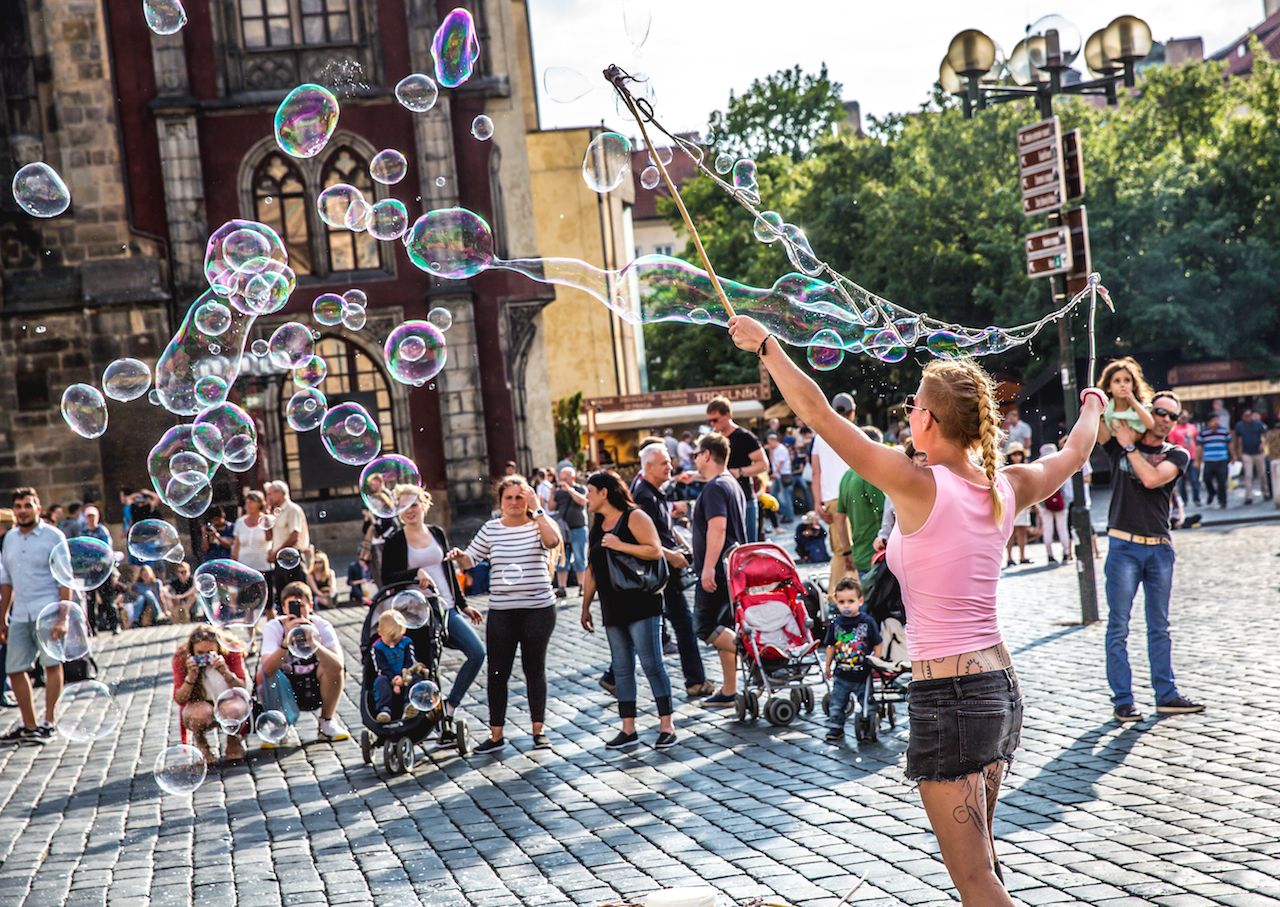
Photo: Subodh Agnihotri/Shutterstock
Prague is not only historically and architecturally stunning, but it also has a ton of activities to enjoy with kids. Compared to other European capitals, it’s also very affordable; hotels, meals, and entry fees are a fraction of the cost than in, say, Oslo. Start off in Letna Park where views of the city and river below are appealing no matter the time of year. Summer visitors can enjoy a drink in the beer garden while kids enjoy the outdoor play area a few steps away. Many river cruises along the Vltava welcome children; you’ll pass by castles, bridges, and architecturally significant buildings without having to wear your feet out walking. Even very young children might enjoy black light theatre, theatrical productions done in almost pitch darkness where performers and props are painted with UV-reactive paint and appear to glow. Several theatres offer shows, and they’re captivating.
Petřín Park, in the center of the city, has no fewer than three playgrounds and a 19th-century mirror maze. AQUAPALACE, an enormous water-based amusement park with seeming kilometers of waterslides, has both indoor and outdoor activities and is open year-round. If you’re visiting in winter, visit a Christmas market; Prague’s Old Town Square market is one of the best in the world. Delicious food and local craftspeople stuff every corner, so sip a mulled wine while your kids explore.
Prague also has 60 museums, including the National Agricultural Museum, which has dozens of interactive exhibits including the opportunity to drive a tractor. The Kingdom of Railways is an interactive model train that lets you tour a scale version of Prague and the surrounding countryside. For lunch, go to Bruxx, a lively Belgian restaurant with a stellar kids’ play area that it shares with the Czech fusion place next door. Adults can enjoy the shellfish while kiddos partake of fish and chips or a heaping helping of waffles.
Billund, Denmark
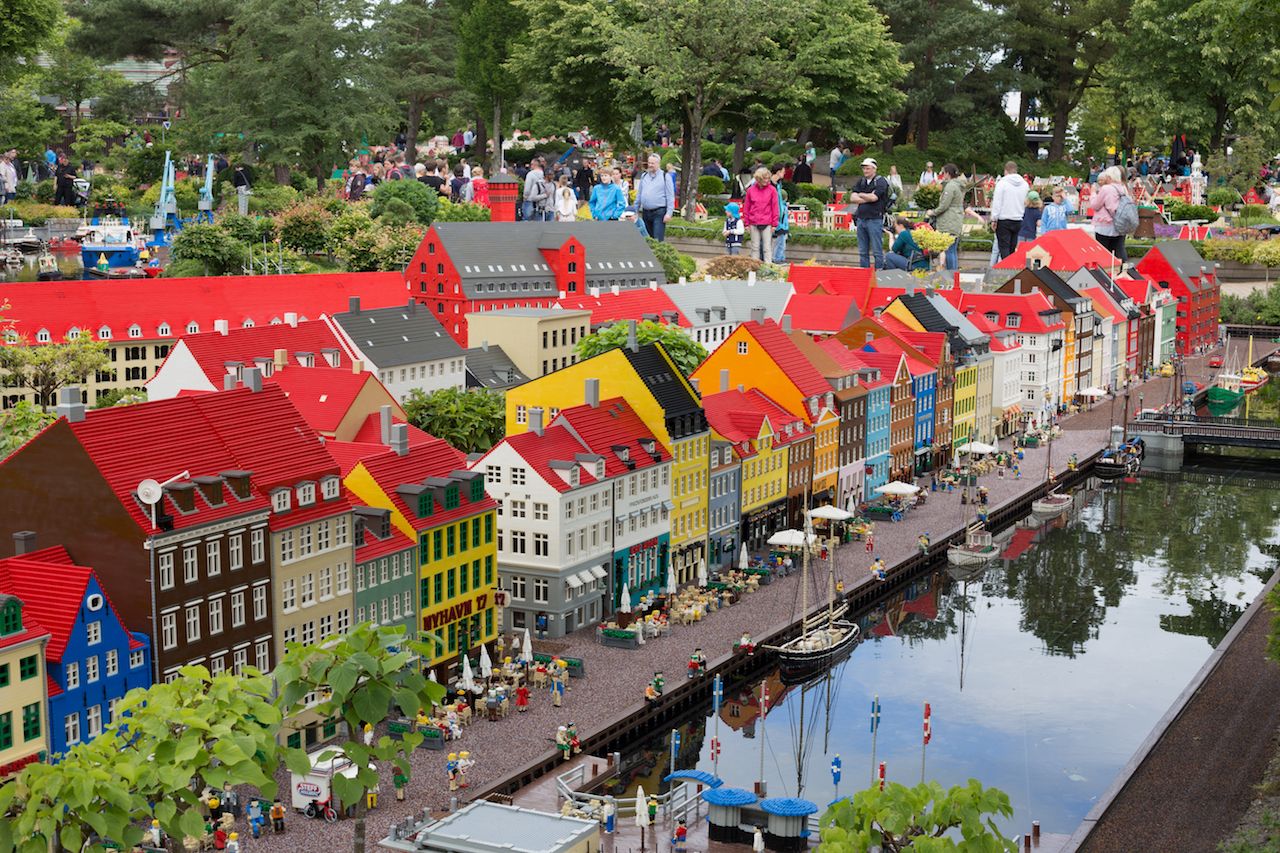
Photo: Anna Soelberg/Shutterstock
There’s only one thing to see in Billund, and it’s Legoland. The original Legoland park opened here in 1968, and it’s been serving a steady stream of visitors ever since. More than 50 million people have walked through the gates. The park lies next to the original LEGO factory and is one of the most popular tourist destinations in Denmark. It’s one of only six Legolands in the world. The town itself is quite small and focused almost entirely on the resort, although there are some restaurants and cafes unrelated to LEGO. I will warn you: My kid was so excited by this experience that she barely slept, so you will definitely want to partake of Denmark’s notoriously strong coffee.
Multiple on-site hotel options are available, from a hotel located right inside the park that has themed rooms decorated with LEGO versions of characters to the more inexpensive Legoland Holiday Village, featuring adorable “barrel rooms,” Ninjago cottages, and Wild West cabins. The holiday village also has a restaurant with buffet breakfast and dinner, a petting zoo with some entertaining goats, and a very well-appointed playground.
2019 sees the opening of the Legoland Castle Hotel where dragon- or princess-obsessed kiddies can enjoy both indoor and outdoor play areas, multiple themed rooms, and take pictures of the park from the parapets. Within the park itself, all rides and attractions are free and range from Duplo World’s more toddler-appropriate options to some mildly terrifying roller coaster and flume rides scattered across seven different themed areas. One of the most popular attractions is Miniland, a sprawling scale model of various local landmarks and locations: Copenhagen’s Nyhavn is easily recognizable as is the London Eye. Explore a replica space shuttle complete with launchpad, or just be fascinated by the semi-functioning scale model of a water-generated power plant. If you just can’t handle another 2×6 brick, go watch Battle of the Brick, a Renaissance-style horseback jousting match.